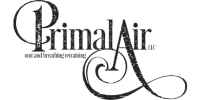
Unlock the Secrets of Orofacial Myofunctional Therapy
Orofacial Myofunctional Therapy (OMT)
Orofacial Myofunctional Therapy (OMT) is a specialized therapeutic approach focusing on the function and coordination of the muscles in the face, mouth, and throat. This therapy addresses issues related to muscle function and is key in treating a range of disorders related to breathing, swallowing, and speech.
The core principle of OMT is to retrain muscle function through a series of tailored exercises. These exercises aim to correct dysfunctional muscle patterns and improve the coordination of the muscles involved. By doing so, OMT helps individuals achieve a healthier and more efficient orofacial muscle function.

OMT is frequently utilized to address issues that can arise from habits such as thumb sucking, prolonged pacifier use, or improper swallowing techniques. These habits can lead to improper alignments and developmental challenges that may affect not only oral health but overall wellbeing.
OMT isn't just isolated to addressing immediate concerns. It also plays a crucial preventive role, fostering proper growth and alignment of facial structures in children. Moreover, it can provide relief for adults dealing with sleep apnea, TMJ disorders, and chronic respiratory conditions.
Professional OMT therapists often work closely with dentists, orthodontists, speech therapists, and other healthcare providers to create comprehensive, individualized treatment plans. This collaborative approach ensures that each patient receives holistic care, significantly improving their quality of life.
By highlighting the importance of harmonious muscle function in the orofacial region, OMT stands out as an effective and vital therapeutic option for countless individuals.
Common Disorders Treated by Orofacial Myofunctional Therapy
Orofacial Myofunctional Therapy (OMT) is highly effective in addressing numerous orofacial disorders. One of the most common issues treated by OMT is orofacial myofunctional disorder (OMD), which affects the muscles of the mouth and face. These disorders can lead to problems with chewing, swallowing, and even speaking.
Patients with tongue thrust, a condition where the tongue pushes against or between the teeth during swallowing, find significant relief through OMT. This therapy efficiently retrains the tongue to achieve a proper resting position, thus preventing dental malocclusions and improving overall oral function.
Another prevalent issue treated by OMT is sleep apnea and other sleep-related breathing disorders. Improper orofacial muscle function can contribute to airway obstructions, exacerbating sleep apnea. Through targeted exercises, OMT helps in strengthening the tongue and throat muscles, thus improving airflow and reducing symptoms.
Children with developmental challenges such as speech delays and articulation disorders also benefit greatly from OMT. By working on muscle coordination and strength, therapists can help kids achieve clearer, more effective speech.
OMT is also beneficial for individuals struggling with temporomandibular joint (TMJ) disorders. By improving muscular balance and function, OMT can alleviate pain and improve jaw mobility. Additionally, OMT supports orthodontic treatments by ensuring that the oral muscles adapt to new tooth alignments, leading to lasting results.
In summary, from correcting tongue thrust and treating sleep apnea to aiding speech delays and TMJ disorders, OMT offers a comprehensive approach to improving various orofacial conditions.
Methodologies and Techniques in OMT
Orofacial Myofunctional Therapy (OMT) employs a variety of techniques tailored to address specific disorders related to the muscles and functions of the face, mouth, and throat. Among the core methodologies are various exercises designed to improve muscle tone and coordination. These exercises target the tongue, cheeks, lips, and jaw to promote proper positioning and function.
One popular OMT technique involves tongue exercises, which help to correct improper tongue posture and movements. This can be particularly beneficial for individuals suffering from tongue thrust or improper swallowing patterns. Exercises may include tongue sweeps, presses against the roof of the mouth, and pushing against resistive objects.
Breathing exercises also play a crucial role in OMT. Proper nasal breathing can prevent a host of issues related to mouth breathing, such as poor oral posture and reduced oxygen intake. Techniques here often focus on teaching individuals to breathe through their nose rather than their mouth, enhancing overall respiratory health.
Additionally, practitioners often use tools and devices, such as myofunctional therapy tools, to assist in muscle training and coordination. These devices can help isolate specific muscles, allowing for more targeted and effective treatment.
Another key technique in OMT involves swallowing training. By teaching individuals to swallow correctly, OMT can alleviate issues such as temporomandibular joint disorders (TMJ) and digestive problems. Swallowing exercises are designed to promote a more efficient and natural swallowing pattern.
Overall, the methodologies and techniques in OMT are diverse and often customized to fit the specific needs of each patient, ensuring optimal outcomes and improved quality of life.
Benefits and Positive Outcomes of OMT
Orofacial Myofunctional Therapy (OMT) offers a range of benefits and positive outcomes that significantly improve the quality of life for patients. By focusing on the proper function of the muscles within the face, mouth, and throat, OMT addresses a variety of issues, from speech disorders to sleep apnea.
One of the key benefits of OMT is its impact on breathing and sleep. Proper muscle function helps maintain an open airway, reducing snoring and instances of sleep apnea. This improvement in sleep quality can lead to better overall health, increased energy levels, and a heightened sense of well-being.
OMT also plays a crucial role in dental health. It can correct tongue thrust and other swallowing disorders, which often contribute to malocclusions and misaligned teeth. By promoting correct oral posture, OMT prevents dental issues, reduces the need for orthodontic treatments, and can even enhance the efficacy of braces.

Speech clarity is another area where OMT excels. Children and adults with articulation disorders often experience significant improvement in speech patterns after undergoing OMT. Improved muscle coordination and strength result in clearer pronunciation and better communication skills.
Furthermore, OMT can alleviate chronic facial pain. By addressing muscle imbalances, OMT reduces strain and discomfort, providing relief from conditions like TMJ disorders.
In summary, OMT offers a holistic approach to treating various conditions, leading to better respiratory health, enhanced dental alignment, improved speech, and reduced pain. These comprehensive benefits underscore the value of OMT in fostering overall health and well-being.
Importance of Early Intervention in Orofacial Myofunctional Therapy
Early intervention in orofacial myofunctional therapy (OMT) is crucial for achieving optimal results. Addressing issues at a young age can significantly enhance the effectiveness of the treatment and minimize long-term complications. When orofacial myofunctional disorders are identified and treated early, it can prevent more severe problems related to oral and facial development, speech, and overall health.
Children are particularly adaptable, and their bodies respond well to corrective therapies. At a younger age, the tissues and muscles in the orofacial region are more pliable, making it easier to correct improper habits such as tongue thrusting, thumb sucking, or abnormal swallowing patterns. Early intervention can also help improve breathing patterns, crucial for overall health.
In addition, early treatment in OMT can enhance dental health by preventing malocclusions and supporting proper jaw development. This can reduce the need for more invasive dental treatments later on, such as braces or orthodontic surgery.
Furthermore, early intervention ensures that children develop proper speech patterns and clear articulation, avoiding future speech therapy. By correcting these issues early, children tend to perform better socially and academically, as they are less likely to have speech-related barriers.
In summary, early intervention in OMT paves the way for better health outcomes, improved dental alignment, optimal speech development, and overall enhanced quality of life. Parents and caregivers should be vigilant in recognizing signs of orofacial myofunctional disorders and seek professional guidance promptly.
Multidisciplinary Approach in Orofacial Myofunctional Therapy Treatment Plans
A multidisciplinary approach significantly enhances the effectiveness of orofacial myofunctional therapy (OMT). By integrating varied professional expertise, patients receive a holistic and comprehensive treatment plan tailored to their unique needs. This collaboration often includes speech-language pathologists, dentists, orthodontists, otolaryngologists, and pediatricians, among others. Each specialist brings a unique perspective, ensuring that all underlying and contributing factors to the patient’s condition are addressed.
For example, while a speech-language pathologist focuses on optimizing the function and coordination of oral muscles, an orthodontist may provide structural corrections that aid in better oral posture and breathing. Similarly, an otolaryngologist can evaluate and treat any related nasal or throat obstructions that might impede progress.
The synergy of these diverse specialties creates a well-rounded treatment strategy. Collaborative communication among the professionals involved ensures continuity of care and consistent progress tracking. This coordinated effort not only enhances the overall effectiveness of the therapy but also accelerates recovery times and maximizes positive outcomes.
A multidisciplinary approach is particularly beneficial in pediatric cases, where early intervention can prevent the development of more severe complications. By addressing orofacial myofunctional disorders from multiple angles simultaneously, young patients often experience significant improvements in both function and quality of life.
Embracing a multidisciplinary methodology in OMT leads to comprehensive care that addresses all aspects of a patient’s condition, paving the way for lasting improvements and a better quality of life.

